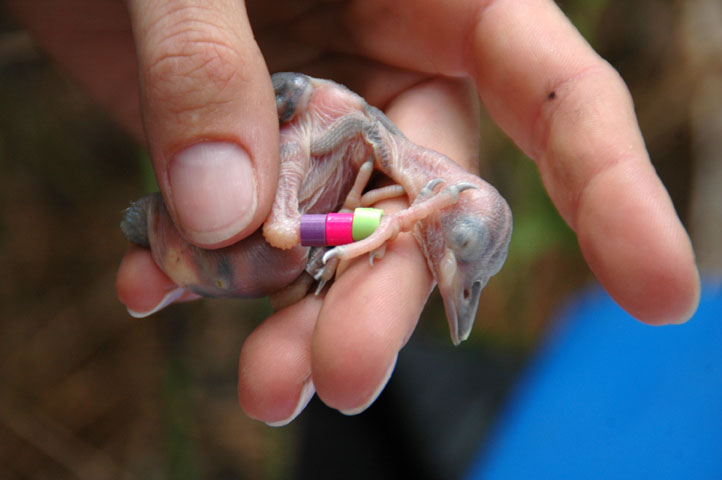Sustaining the Red-Cockaded Woodpecker Population
The National Forests in Florida play a critical role in recovering the red-cockaded woodpecker (RCW), a federally endangered species. The biggest threat to its existence is lack of suitable habitat, but the Apalachicola National Forest provides a safe refuge for the largest population of RCWs in the world.
| The National Forests in Florida translocation program has played a key role in red-cockaded woodpecker recovery in Florida and across the Southeast. (Photo by Chuck Hess) |  |
“Today RCWs exist almost exclusively on public land and a few well-managed private properties,” said Apalachicola National Forest Deputy District Ranger John Dunlap.
According to Dunlap, the most critical component to a well-managed RCW population is prescribed fire. The RCW and countless other species evolved in a landscape that received frequent fire at two to three year intervals. In a pine forest, fire will help minimize hardwoods and maximinize hervaceous ground cover so they can flourish.
Once found sprawling in 90 million acres of longleaf pine forests in the Southeast, the RCW population today numbers about 16,250 birds or 6,500 active clusters across 11 states. The population reduction can be attributed to the declining longleaf pine ecosystem whose footprint has been reduced to three percent of its original expanse. The population on the Apalachicola Ranger District is stable to slightly increasing and is currently around 575 active RCW groups.
“The most exciting thing in recent years has been the growth of the Wakulla Ranger District population. In the spring of 2011 there were 150 active groups in this population. We are currently crunching the numbers for the spring 2015 season and we have our fingers crossed that we will hit 200!” said Dunlap.
This fall, there are plans to relocate 15 pairs of RCW to the Southern Range Translocation Cooperative (SRTC), with as many as five additional pairs being moved from the Apalachicola Ranger District population over to the Wakulla Ranger District. The SRTC is a collaborative group of federal, state and private entities that collectively work towards restoring RCW populations by relocating them from donor sites to recipient sites.
Translocation develops better spatial arrangements of groups to reduce isolation, introduces new groups to suitable habitats and increases genetic diversity in smaller groups. Dunlap, who oversees and monitors the RCW population, believes this program is critical to increase their numbers across their range.
 |
Wildlife biologists band red-cockaded woodpeckers on the Apalachicola and Osceola National Forests to monitor their nesting activities and population health on each forest. The Apalachicola National Forest is home to 650 red-cockaded woodpecker groups, or 1,200 birds, that live in the forest's longleaf pine ecosystem. (Photo by Susan Blake) |
“Although the RCW is still listed as endangered, this bird is a success story. Many new populations have been established across the southeast in recent years and the trend is certainly headed in the right direction,” said Dunlap. “The RCW is one species that is rewarding to work with because we know exactly what the birds need. If we put birds in good habitat they will thrive.”
The RCW is a small bird measuring about seven inches long and identified by its white cheek patch and black and white barred back. The male birds have few red feathers that usually remain hidden under the black feathers on its head.
To keep the populations thriving, biologists on Apalachicola National Forest study the birds and create suitable habitat to attract them and hopefully lead to reproduction. The use of artificial cavities, in mature pine trees allow existing populations to stabilize and encourages younger RCWs to move into suitable but unoccupied habitat.
“While we manage the habitat on both areas, we are also actively trying to grow the population on the Wakulla Ranger District. This is done by installing recruitment clusters in suitable habitat. These recruitment clusters consist of four artificial cavities placed in strategic locations with the hope birds dispersing in the fall will move in and start a new group. Each year we also move birds from the Apalachicola Ranger District over to the Wakulla Ranger District.”
RCWs are effective indicators of a healthy longleaf pine ecosystem. The birds are translocated in October. Conservation and management is central to recovery goals and frequent prescribed burning is essential to maintaining a balanced forest ecosystem for the woodpeckers.

